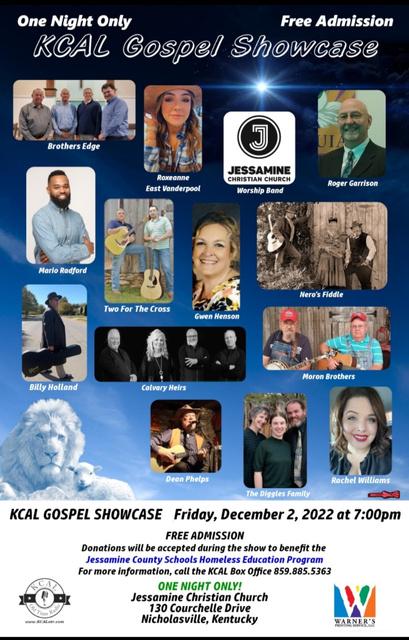
2 minute read
DidyouKnow?
Theactualdate December 25 isnotmentionedintheBibleasthedayJesuswas born.Thedateisactuallylostinhistory.

ManyhistoriansbelieveJesuswasactuallyborninthe springtime
WegivepresentsonChristmastomimicthegiftsthe Three Wise Men gaveto BabyJesus.


AncientEgyptiansandRomansused Evergreen treestosignfifythatspringwas coming.
St.NicholaswasaChristianbishopwhogaveawayhislargeinheritancetothe poorandrescuedwomenfromservitude.InDutch,hisnameisSinterKlaas,which latermorphedinto Santa Claus inEnglish.




Coca-Cola actuallyplayedamajorroleintheimageofSantaClausthatweknow today.In1931,thebeveragecompanyhiredanillustratornamedHaddon Sundblomtodepictthejollyoldelfformagazineads.
Believeitornot, Black Friday isn'tthebusiestshoppingdayoftheyear.Records showthattheFridayandSaturdaybeforeChristmasareactuallythebusiestdaysfor shoppingintheUS.
Curiously, the head and mouth of a river are on opposite ends—the head is at the beginning and the mouth is where it concludes. The headwaters of the Kentucky River originate in the mountains of eastern Kentucky in three forks: the North, Middle, and South Forks, which merge together near Beattyville. Along its course, the Kentucky River drains about a third of the state, flowing in a northwesterly direction, collecting runoff, creeks, streams, and other rivers along the way to its mouth at the Ohio River near Carrollton, Kentucky
For Jessamine County, over half of its seventy-three lineal mile boundary line is composed of the river. While it is fifteen or so miles in a straight line from the Fayette County line where the river starts forming the Jessamine County line to the point where it begins forming the Woodford County line, the actual distance of the twisting and turning meanders of the river make up about forty-five miles of Jessamine County’s southern boundary, with the majority of it being in an area where a million years’ worth of erosion has created steep limestone cliff known as palisades.
Much of Central Kentucky that is located south of the river is drained into the Kentucky River by Dix River, with its mouth adding water to the Kentucky River in Mercer County slightly upstream from High Bridge
Jessamine County’s surface water makes its way into the Kentucky River mainly by way of Jessamine Creek and Hickman Creek. Jessamine Creek begins in northern Jessamine County, just south of Catnip Hill Road, and empties into the Kentucky River about three and a half miles south of Wilmore. Altogether, it meanders about ten miles from north to south, draining the county west of Nicholasville.
The two main branches of Hickman Creek, West Hickman and East Hickman, get their start outside of Jessamine County, flowing from Fayette County, before merging in northeastern Jessamine County near Mackey Pike and Smith Lane. From there Hickman Creek meanders about fifteen miles before emptying into the Kentucky River just upstream of the Highway 27 crossing at Camp Nelson Other streams and creeks also drain into the Kentucky River, at various location along the river boundary, but the Jessamine and Hickman are the main sources
Crossing the Kentucky River was always a challenge for people, being difficult to ford, but created opportunities for ferry operators. One such ferry is still open today at the end of Tates Creek Road, where Jessamine, Fayette, and Madison Counties meet. Eventually, civil engineers conquered crossing the river with bridges high above its flood zone. First, the Cincinnati Southern Railroad built the engineering marvel cantilevered bridge in 1877 that spans the river from Jessamine County to Mercer County at High Bridge Almost a hundred years later, highway engineers designed and built a new Highway 27 bridge crossing the river That bridge and the companion four-lane highway that eventually ran all the way to Bryantsville, would give communities to the south much easier access to Jessamine County, and help make it the vibrant county that we know today.
Dix River was dammed about two miles south of the mouth in the early 1920s to form Herrington Lake for electricity generation. In his early travels to Kentucky, Daniel Boone identified Dix River as an ideal for a dam, but not knowing about electricity, he envisioned a water-powered grinding mill, not a hydroelectric dam.
Today, many communities, including municipal water service provider in Jessamine County, draw water from the Kentucky River. The Kentucky River has always been an important resource for area inhabitants. Native Americans used it for travel, utilizing dugout canoes to move between villages along the river. Early settlers used it for navigation and a food source, and eventually it was the boundary line for the original three counties of Fayette, Lincoln, and Jefferson in 1780 Later steamboats would power their way on the river, and the government, both state and federal, would be involved with improving navigation and flood control with a series of locks and dams.





